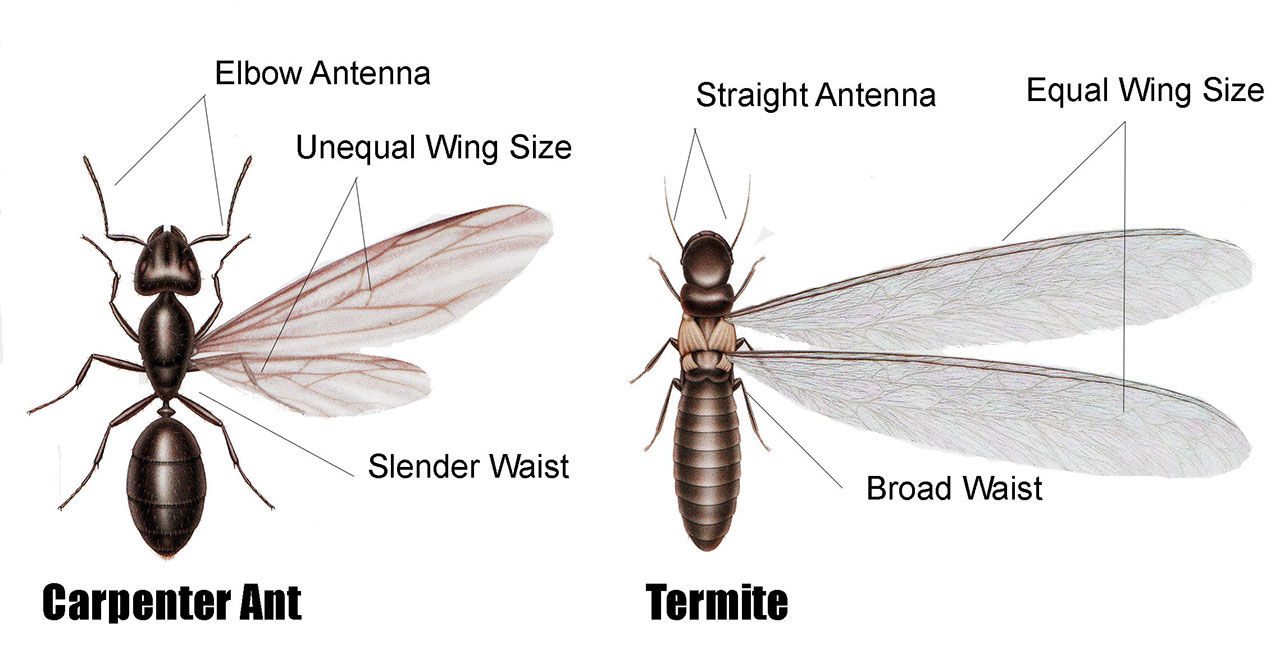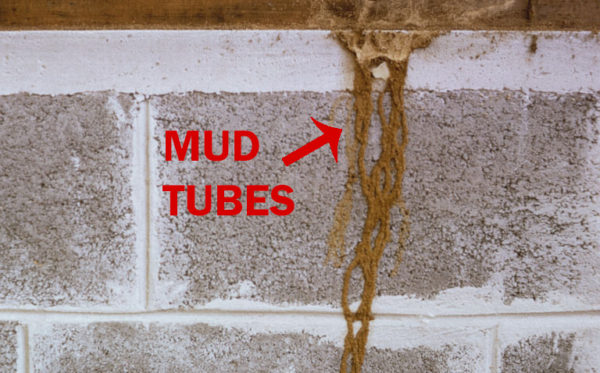Termite. A word homeowners fear across the nation.
Termites cause a staggering $5 billion+ in property damage annually and every year, people in the U.S. spend $7.47 billion dollars in pest removal and cleanup. While termites live in all 50 states, they especially thrive in Arizona. It can be difficult to tell whether or not you actually have termites in Arizona.
If you think you might currently be dealing with termites, or are afraid that you might one day, consider this your go-to guide for all things pertaining to termite treatment. You’ll learn how to identify whether or not you have termites, how to get rid of them, and how to prevent any future termite infestations. We know we’re a bit biased, but to really know for sure if you have a termite problem, get a free termite inspection from one of our experts.
Let’s get to it.
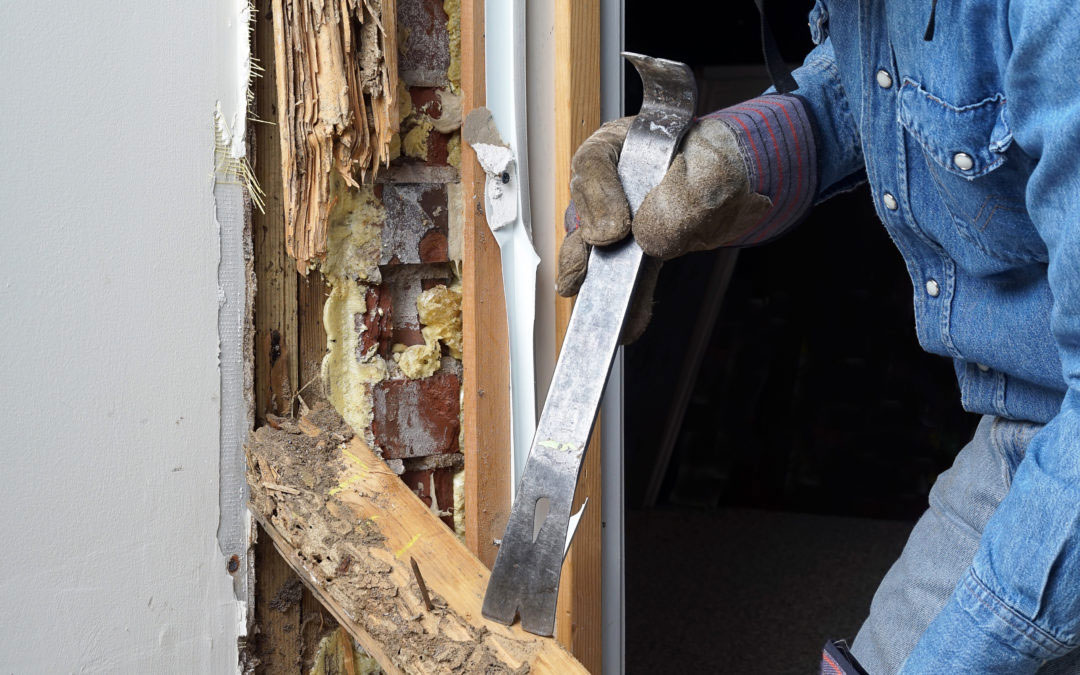
Recognizing Termites in Arizona
There are a few telling signs when you’re facing a termite problem, but first, let’s discuss what a termite actually is and looks like.
What Are Termites and How They Damage Wood
Termites are a type of winged insect. Their nutrition comes from the cellulose found in wood. As they chew and eat wood, it creates tunnels on the wood internally. On the surface, most woods will look totally normal, but once the wood is prodded it crumbles.
They are social insects and live in large, complex colonies containing up to several million termites.
Two of the most common types of termites in Arizona are desert subterranean termites and the western drywood termite.
Subterranean termites thrive in moist environments and consume wood that is close to soil underground, they often inhabit basements.
Drywood termites eat dry wood and are often found in fence posts and dead tree limbs. Subterranean termites enter your home from below, while drywood termites enter your home from above ground.
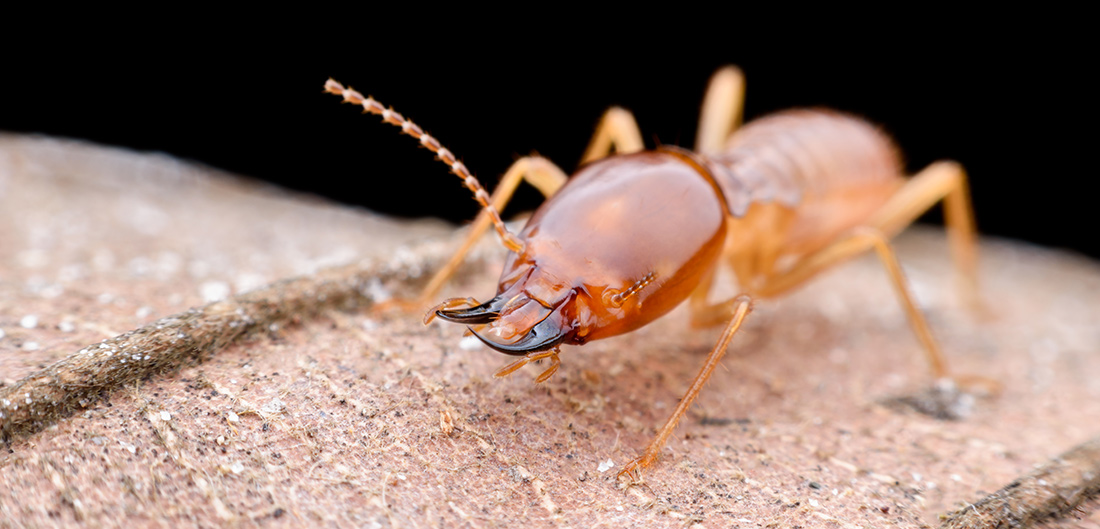
What Do Termites Look Like?
Not all termites look the same. Most termites will generally measure between ¼ and ½ of an inch in length but can range from white to light brown in color. Some termites have wings and others don’t.
Typically subterranean termites in Arizona are dark brown in color, the worker termites are not winged while the swarmer termites are winged. The wings typically span twice as long as the termite’s physical body.
Drywood termites in Arizona have long mandibles (mouth structure) with teeth and have a body that is wider than their head. Generally, swarmer dry-wood termites have two sets of wings (but shed their wings after swarming).
Pro-Tip
Termites are often mistaken for carpenter ants or bark beetles. If you are unsure which type of wood boring insect you’re dealing with, it’s best to have a professional come and inspect the situation.
Not all termites look the same. Most termites will generally measure between ¼ and ½ of an inch in length but can range from white to light brown in color. Some termites have wings and others don’t.
Typically subterranean termites in Arizona are dark brown in color, the worker termites are not winged while the swarmer termites are winged. The wings typically span twice as long as the termite’s physical body.
Drywood termites in Arizona have long mandibles (mouth structure) with teeth and have a body that is wider than their head. Generally, swarmer dry-wood termites have two sets of wings (but shed their wings after swarming).
How to Know if You Have a Termite Problem
Termite damage isn’t always readily apparent. That’s because termites tunnel and eat wood from within. This could leave the surface of wood with an active termite infestation looking completely normal. It can be quite difficult to tell if you have a termite infestation until it really begins to take over. Below are a few helpful tools that will help you determine whether or not you have a termite infestation.
But if you see any of the following warning signs you really need to call a pest professional.
Termite Mud Tubes
If you see mud or shelter tubes, it’s a sign that you’re dealing with termites. These tubes come in four different types and are made by worker termites saliva mixed with soil and bits of wood. If you break open a tube, you might find some of the working termites in action. The four types of shelter tubes are:
- Working Tubes: these are constructed from the underground nest and travel all the way to the wooden structure.
- Exploratory/Migratory Tubes: these tubes stem from the underground nest, but don’t actually connect to any wooden structures.
- Drop Tubes: these tubes run the reverse of a working tube, straight from the wooden structure back to the underground home base.
- Swarm Tubes: these tubes are built for the king and queen termites to emerge from during swarming season.
Pro Tip
If you see termite tubes, you might be asking yourself, “Should I knock down termite tubes?” The answer is no. You should call a professional to remove the tubes.
Termites can easily and quickly rebuild their tubes.
While some species of termites might be deterred from hanging out after their tubes have been knocked down, it’s not a guaranteed way to eliminate termites or prevent them from spreading.
Wood and Other Physical Damage
- Settling cracks, sagging floors or any other signs of structural weakness
- Blistering or peeling paint on wood (this is from the moisture termites bring under the pain)
- Blistering or darkened areas on wood paneling – again from the moisture
Other Termite Infestation Signs
Finding piles of thin, equally sized insect wings about 1/4 inch long. Termite wings are often described as ‘papery’, ‘membranous’, or ‘silvery’. These wings are usually found in window sills, on floors, and sometimes caught in spider webs.
Inspecting Wood for Termite Damage
Another way to tell whether or not you have termites in Arizona is to look at your wood. Do you see dark spots or blistering on the wood? If you do, it’s likely that there are termites working there. Damaged wood is often easily punctured and there might be internal caves where the termites have chewed through.
Season Matters
Termites swarm in the spring, summer, and fall in order to reproduce. If you see a swarm of winged termites, it’s a sure telling sign that you have termites in your home or at least nearby.
How To Get Rid Of Termites in Arizona?
Now that you’ve determined that you are facing a termite infestation, you need to prepare yourself for getting rid of them. There are ways to perform termite treatment on your own, but most often it’s wise to bring in a professional to handle the problem.
Call a Termite Exterminator
Do-it-yourself termite treatment can only do so much and, if you’re having trouble getting rid of the pesky little guys, it might be time to seek professional help. Even if the DIY treatment seems to be helping, you still will benefit from having an inspection – if only for peace of mind.
Cut off the termites’ food source
This could mean a few different things, but as a general rule, if you happen to have lumber lying around or wood in your yard, move this away from your yard or grind the wood so there’s no opportunity for an infestation.
Seal off the pests entryway to your home
This can be done by making sure that there are screens on every outside vent to prevent the insects from moving in.
Another way to prevent termite entry into your house is to install a barrier around the home. Oftentimes, homes are built with barriers, but you can also install a new one after construction. The barrier needs to be installed to a waterproof membrane along a foundation.
Pro Tip
Bait The Termites With A Chemical Solution
You can use a chemical solution as bait to attract the termites. As they eat, they are poisoned and eventually die off. There are three types of chemical solutions you can choose from.
Liquid Pesticides
These pesticides are formulated specifically for termites and can be sprayed directly into the ground. This can help get the pesticide into the nest and underground tubes the unwanted guests have built.
Infused Building Materials
This is more of a preventative measure than a treatment. Using infused building materials helps ensure that if termites ever try to enter your home, they will immediately be in contact with a pesticide. This will prevent a colony from ever successfully nesting in your home.
Wood Treatment
You can also buy treatment spray for wood and it can be applied on an as-needed basis – as both a prevention and treatment method.
Pro Tip
Read all of the application instructions when it comes to pesticides. If it’s applied incorrectly, it can become ineffective.
Kill The Colony Naturally
There are a few natural methods that you can use to kill off the termites in your home.
Wet Cardboard Trap
Subterranean termites thrive in moist environments, so if you’ve got any spare cardboard boxes lying around you can wet the box and set it near where you suspect the termite colony might be foraging. The wet cardboard works as a termite lure and will attract the colony to it. Once you see that the termites have moved onto the cardboard, burn the cardboard. This kills the termites.
Sunlight
Termites are like little vampires. They can’t be in direct sunlight. If you’ve got a piece of furniture that appears to be infested, placing the item in direct sunlight during the day, the termites will typically die. If you’re unable to bring the furniture item out, you can bring the sunshine in by using UV ray lamps.
Pro Tip
Make sure that the colony of termites is as exposed as possible to the sunlight – if there is a good amount of wood or fabric between the insects and the sun, it’s less likely that this method will be effective.
Bring in a natural termite predator
Nematodes are parasitic worms that eat termites. Nematodes can be bought at most stores and even online. Simply let the worms roam in the dirt near where you suspect the colony to be and let nature run its course.
Making Termite Infestations a Thing of the Past
If you’ve ever experienced a termite infection, it’s probably safe to say that you don’t ever want to come in contact with them again. If you’ve never had termites, you likely never want to. We’ve got your go-to guide for termite prevention so you can enjoy a life that is termite-free.
Home Building Design
One of the ways to prevent a termite infestation is by ensuring that your home is built in a way that is unattractive to termites. There a few different things to consider when you’re building or remodeling a home in Arizona that is termite-free:
- Make sure that all substructural wood is a minimum of 12 inches above any soil. Because AZ termites come from the soil into the wood in your home, this is a way to disincentivize the termites from coming all the way up to your house.
- Keep the foundation of your home well ventilated and dry. Because subterranean termites thrive in moist environments, keeping the foundation of your house well ventilated can make it unappealing to foraging termites.
- Have a barrier built around the base of your home to help seal and protect your home from an infestation. Popular barriers types include Copper Termite Shields, Stainless Steel Mesh, Impasse, and Sand.
Termite Bait and Monitor
Another way to help prevent your home from becoming infested with termites is having baits installed throughout your yard. Termite baits are made with cellulose, which is what the termites eat from the wood, and also contain a slow-acting insecticide. It’s important that this is slow-acting because other termites can become infected as well and one bait can actually eliminate an entire colony of termites including termite larvae.
It’s important that you have baits installed by a professional who knows the best places to install them and how to do it in a way that is effective. Bait stations are generally housed underground, but can also be placed on active termite tubes, if they already exist in your yard.
If you notice that your bait is attracting nearby termites, then you should call a professional to come and perform an inspection to make sure that you aren’t dealing with a termite infestation.
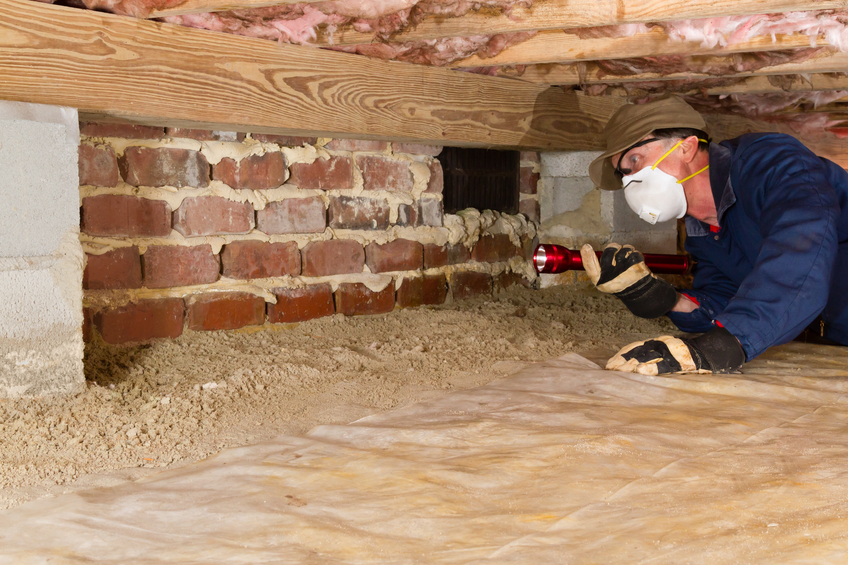
Yearly Termite Inspections
Even though there can be thousands of termites in a single colony, the reality is that they move pretty slowly. If you have termites in your home, you might not even realize they’re there until they’ve been eating through your wood for a few years. That’s why it’s important to have yearly inspections.
Yearly inspections can help nip a termite infestation in the bud before it ever becomes an issue. Because termite treatment can be quite costly for homeowners (not to mention replacing any affected wood), having yearly inspections can save you both money and a lot of frustration.
How Much Does a Termite Treatment Cost?
Like we’ve mentioned before, termite treatment can be pretty costly. In the U.S. homeowners spend a collective average of more than $2 billion a year on termite treatment and control.
Arizona termite treatment cost can be anywhere from $1500 to $4000 depending on the size of your property. That’s why it is absolutely imperative to be proactive in your fight against AZ termites.
Termites In Arizona- It Pays to be Proactive
Termites in Arizona are no joke. It’s definitely much more affordable to take proactive preventative action towards termites than it is to be reactive once a termite infestation has already spread throughout your home.
Once you’ve concluded that you do in fact have termites, it’s important that you call a professional to come to inspect your home and begin the termite treatment process.
We understand that this topic can feel overwhelming. So if you have any questions about termite control, feel free to contact us at Sexton Pest Control.
For over 50 years, we’ve made it our mission to provide unparalleled service and guaranteed customer satisfaction when it comes to fighting back against all pests – including the infamous termite.
Call us for a free termite inspection today for a termite free tomorrow.

